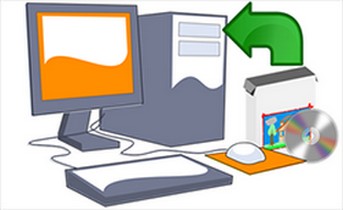
As the owner of a small engineering service company, one of our major costs is software. This represents an investment cost and of course the ongoing cost of that most honorable of all con games – software maintenance fees.
This was thrown into sharp relief in the last couple of years as we relocated to the Cayman Islands. When we were closing down the Canadian corporation we had to re-jig our software maintenance contracts and move them to a local service provider in the Caribbean region.
After a lot of general messing around we discovered that the policy for this particular software company was that you had to pay $200 per seat to transfer the maintenance contract and have the privilege of continuing to pay significant ongoing costs for bug fixes and updates that are given for free with non-‘professional’ software
As much as I enjoy gifting people money (?) we declined this exciting opportunity to further enrich our software supplier. The upshot of this was that we either had to pay the transfer fee or cancel the maintenance contracts. As I was not going to pay the fee we canceled our software maintenance contract for our design software.
The issue of lousy support for ‘professional’ very expensive software came to a head this week as my fabulous high-performance laptop had a video card driver update which my $5000 design software package did not like. So, now I get a frame rate, even for the simplest model, of about one frame every two seconds.
No other software I buy (office applications, video games, cheaper applications) offer the same exorbitant costs for customer support. They all offer updates and bug fixes pretty much for free – at least until there is a major software update.
We have our own little software company, XL-Viking, which is an add-in for Microsoft Excel. We dread the day when Microsoft releases a major update for Excel because we will have to come up with a version of our software that works with the new version of Excel – and supply it without charge to our customer base. But then we only charge $50 for the professional license. If only we charged $5000 per license we could charge people for the privilege of getting the upgrade and still have the software full of bugs.
This all looks to be ass-backwards, but…….
I know this is a function of economies of scale – more expensive software packages generally have a smaller user base so it is more difficult to offer free support and upgrades. Or this is what I thought I knew was until I started to dig into the numbers.
For example, Dassault Systems software business only made a paltry €402,000,000 profit in 2015 (I’m not singling them out, just using them as an example). I can see why they need to charge for bug fixes for a $15,000 software package with that kind of profit. They are barely scraping by (sarc).
I used to work in the music industry many years ago in another life. Music used to be sold in a form that was incredibly profitable for the record companies. This ended with the dawn of digital music. Napster came along and showed everyone how to illegally share music for free. There was a responsive paradigm shift in the industry (that is still ongoing) and the cost of music has dropped to a fraction of the previous cost as the industry realized that they had to compete with free and now you have Spotify, Google Play, Itunes and a host of other services that offer music at a less exorbitant price.
Many artists choose to give their music away for free and live off donations, merchandising and live fees. This is the same approach we have taken with our technical library.
Cable TV is going through the same shift and streaming services at a fraction of the cost, making traditional cable TV packages look expensive and nonsensical.
I am not advocating that everyone should start using hacked copies of commercial software to force a Napster type revolution in the design software industry. A similar shift through natural evolution would be nice though. Admittedly it is happening with subscription-only software costs.
So this year we will make the change to a subscription only CAD software package. We will post details of the selection process and the final decision we make – and whether we think it is any better than the industry status quo.

Comment On This Post